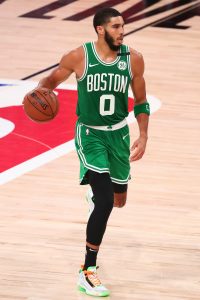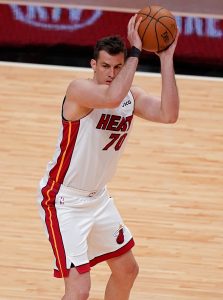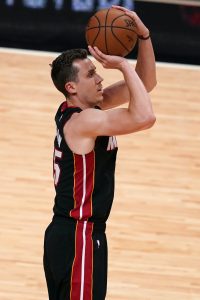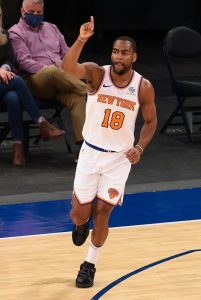We’re still more than two-and-a-half months away from NBA draft day, but before we get to July 29, there are several other important dates and deadlines on the calendar. Here are some of those dates and deadlines worth keeping an eye on:
May 30 (11:59pm ET): Deadline for early entrants to declare for the draft
College players and international early entrants have until the end of the day on May 30 to submit their names into the 2021 NBA draft pool. They can withdraw their names later if they decide they’re not quite ready to go pro, though if college players want to maintain their NCAA eligibility, they must put off hiring an agent who’s not certified by the NCAA.
In a typical year, once the early entrant list is set, NBA teams can begin conducting or attending workouts for those players. However, with COVID-19 still looming as a factor, it’s not clear what form pre-draft workouts will take in 2021.
June 19-21: NBA G League Elite Camp
After having to cancel this event in 2020 due to the pandemic, the NBA will bring it back in 2021.
In 2019, the Elite Camp – having recently been revamped by the NBA – consisted of 40 G League invitees participating in the first half of the event, followed by 40 top draft-eligible players (who weren’t invited to the actual combine) taking part in the second half. It’s unclear if the format will remain the same this year.
June 21-27: NBA draft combine
This week-long event allows NBA teams to get a first-hand look at many of the year’s top draft-eligible players. According to the league, the plan for this year’s combine is to conduct five-on-five games and strength and agility testing, though that’s subject to “evolving public health conditions.”
The combine is often particularly important for early entrants who have yet to decide whether or not to stay in the draft. The feedback they get at the combine could go a long way toward dictating whether they keep their names in the draft or return to school for another year.
 June 22: NBA draft lottery (8:30pm ET)
June 22: NBA draft lottery (8:30pm ET)
The 2021 draft lottery will be the third one that uses the new format, which was introduced in 2019. With the lottery odds flattened out, the NBA’s worst team will only have a 14% shot at the No. 1 overall pick, as opposed to the 25% chance it had prior to ’19.
The new system has provided some excitement during the past two draft lotteries, as five of the eight teams that claimed top-four picks in 2019 and 2020 entered the night without a top-six spot in the lottery standings.
Our reverse standings provide a glimpse at what the pre-lottery draft order could look like.
July 7 (11:59pm): NCAA early entrant withdrawal deadline
College underclassmen (and, this year, seniors) who want to retain their NCAA eligibility will have to withdraw their names from the draft pool by July 7. NBA rules call for a later withdrawal deadline, but the NCAA has its own set of rules that say the deadline is 10 days after the combine.
An early entrant could technically wait until after July 7 to withdraw from the draft and could still retain his NBA draft eligibility for a future year. However, he would forfeit his amateur status in that scenario, making him ineligible to return to his NCAA squad.
July 19 (5:00pm ET): NBA early entrant withdrawal deadline
This is the NBA’s final deadline for early entrants to withdraw their names from the draft pool and retain their draft eligibility for a future year.
By this point, we generally know whether an NCAA underclassman kept his name in the draft or not, but this is an important deadline for international players, who aren’t subject to the same restrictions as college players. We’ll likely hear about several international early entrants withdrawing from the draft during the days leading up to July 19.
July 29: NBA draft day
The most exciting few weeks of the NBA offseason unofficially get underway on draft day, which is often when some of the first major trades of the summer are completed and we get a sense of which direction certain teams are heading.
It’s also worth noting that the hours and days after the draft ends will be hugely important for many of this year’s draft-eligible prospects — a ton of players who aren’t selected with one of the 60 picks in the draft will reach agreements shortly thereafter to play for an NBA team’s Summer League squad, to attend training camp with a club, or to sign a two-way contract.
Photo courtesy of USA Today Sports Images.
 Fox probably has no chance at making an All-NBA team, given the competition at guard and the Kings’ spot in the standings. The other three players here have better cases, but Adebayo is likely a long shot, making Mitchell and Tatum the most realistic candidates. They’d only need to sneak onto the Third Team to increase the projected value of their new five-year deals by more than $32MM.
Fox probably has no chance at making an All-NBA team, given the competition at guard and the Kings’ spot in the standings. The other three players here have better cases, but Adebayo is likely a long shot, making Mitchell and Tatum the most realistic candidates. They’d only need to sneak onto the Third Team to increase the projected value of their new five-year deals by more than $32MM. Embiid is still under contract for two more years beyond 2020/21, which is why he’d only be able to tack on four new years to his current deal instead of five. Jokic is in a similar spot, but because he’ll only have six years of NBA service at the end of this season, he’d have to wait until 2022 to officially sign an extension, at which point he’d be eligible for five new years instead of just four.
Embiid is still under contract for two more years beyond 2020/21, which is why he’d only be able to tack on four new years to his current deal instead of five. Jokic is in a similar spot, but because he’ll only have six years of NBA service at the end of this season, he’d have to wait until 2022 to officially sign an extension, at which point he’d be eligible for five new years instead of just four. Nemanja Bjelica
Nemanja Bjelica With all that in mind, let’s check in on how this year’s RFAs-to-be will be impacted by the starter criteria. Listed below are the former top-14 picks on track for restricted free agency who have not met the starter criteria. These players will be eligible for qualifying offers worth $7,031,451.
With all that in mind, let’s check in on how this year’s RFAs-to-be will be impacted by the starter criteria. Listed below are the former top-14 picks on track for restricted free agency who have not met the starter criteria. These players will be eligible for qualifying offers worth $7,031,451. The players listed below signed as second-round picks or undrafted free agents, but have met the starter criteria and are now eligible for a qualifying offer worth $4,736,102.
The players listed below signed as second-round picks or undrafted free agents, but have met the starter criteria and are now eligible for a qualifying offer worth $4,736,102. The salary limitations that apply to Non-Bird rights are more severe than those pertaining to Bird rights or Early Bird rights, so in many cases, the Non-Bird exception may not be enough to retain a well-regarded free agent. For instance, the Sixers held
The salary limitations that apply to Non-Bird rights are more severe than those pertaining to Bird rights or Early Bird rights, so in many cases, the Non-Bird exception may not be enough to retain a well-regarded free agent. For instance, the Sixers held